
Aprender es modificar o adquirir nuevas habilidades, destrezas, conocimientos, conductas y valores mediante la experimentación, el estudio, la observación, el razonamiento o la instrucción. Múltiples y variados juegos disponibles hoy en día, desde los más clásicos hasta los más innovadores, pueden ser grandes herramientas para construir una variedad de aprendizajes: lectoescritura, matemáticas, razonamiento y resolución de problemas, etc. aportando motivación e interés a los jugadores. Más allá de la estimulación de las inteligencias múltiples, fomentaremos la autoestima, incentivaremos la cooperación y el trabajo en equipo y mejoraremos el comportamiento y la actitud, entre otros muchos aspectos.
 Auditory Memory Caterpillar
29,90 € (VAT not included)
Auditory Memory Caterpillar
29,90 € (VAT not included)
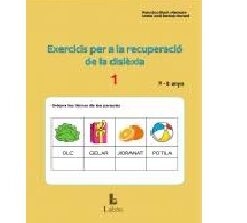 Ejercicios para la recuperación de la dislexia - 1
17,90 € (VAT not included)
Ejercicios para la recuperación de la dislexia - 1
17,90 € (VAT not included)
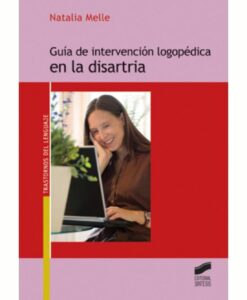 Guía de intervención logopédica en la disartria
24,00 € (VAT not included)
Guía de intervención logopédica en la disartria
24,00 € (VAT not included)
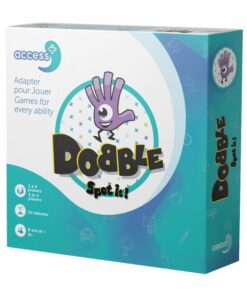 Dobble access +
20,65 € (VAT not included)
Dobble access +
20,65 € (VAT not included)
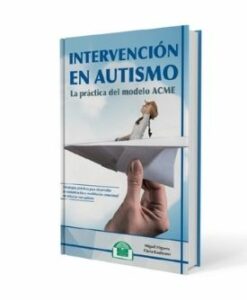 Intervención en autismo
21,15 € (VAT not included)
Intervención en autismo
21,15 € (VAT not included)
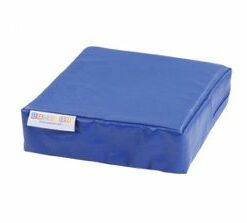 Blue vibrating cushion
35,45 € (VAT not included)
Blue vibrating cushion
35,45 € (VAT not included)
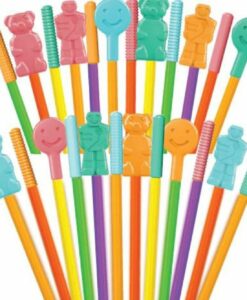 Pencil teether -Talk Tools
7,90 € (VAT not included)
Pencil teether -Talk Tools
7,90 € (VAT not included)
Price filter
No account yet?
Create an AccountLanguage learning normally takes place through communicative interaction between a child and a speaking environment, based on cognitive and physiological skills that determine the pace of development.
This interaction, which is characterized by a reciprocal adaptation of messages and utterances, is sufficient and necessary for the normal development of language to take place to its full extent.
However, there are cases of speech and/or language delays or absences, in which intellectual, sensory, structural or affective deficiencies prevent the full use of these real communication situations which, on the other hand, given the little success they obtain, are often also less stimulated by the environment.
It is then necessary to program a specific intervention, the speech therapy intervention.
Although such intervention should try to catch up as much as possible or correct defects starting from operative situations of communicative interaction(functional strategies), it is often necessary to carry out prior or parallel work of stimulation and specific learning of isolated elements, either in the phonetic aspect, or in the semantic or syntactic aspect(formal strategies).
These specific stimulation or learning exercises, programmed outside communication situations, run the risk of lacking motivation for children and tiring them out because of their highly repetitive nature: this is why re-educators have always made use of a motivation parallel to the learning itself, by including it in a play situation.
The games presented here are only intended to provide speech therapists with training material, long used before in speech and language re-education, focused more directly on those aspects that generally require a more or less long phase of repetition to achieve their definitive acquisition or in which the graphic representation allows a better understanding of the mechanisms that we are trying to re-educate or build.
They are not at all a learning method; neither are they the way to start the presentation of the linguistic contents they use: this presentation must start, in all cases, from an insertion in the communicative chain of which the children themselves are an active part.
They constitute one more material, an aid for a process of stimulation and model setting, necessary in many cases, and each professional will have to interpret and adapt it to his or her own methodological and situational variables.
https://logopedicum.com/wp-content/uploads/2022/01/Verbos-247x300.jpg 90.00 instock LANGUAGEMorphology and syntaxSemantics 0 0.00 0 https://logopedicum.com/wp-content/uploads/2022/01/Verbos-247x300.jpg 14314822822449 90.00 74.38 0.00 0.00 2022-01-19T17:30:51+01:00The method tries to achieve the approach to the basic syntactic or functional structures of the language with the basic vocabulary, based on observation. In this way, it turns out to be a symbolization of the reality of the children who see it and structure it in a coherent expression.
The method is indicated for deaf and hearing impaired, mentally handicapped, developmentally delayed, aphasic and dysphasic children.
It can also be a suitable material to stimulate the language in students of Early Childhood Education or Primary Education students of integration.
https://logopedicum.com/wp-content/uploads/2021/11/vocabulario-basico-imagenes-247x300.jpg 20.00 instock BooksHearing and languageLANGUAGESemantics 0 0.00 0 https://logopedicum.com/wp-content/uploads/2021/11/vocabulario-basico-imagenes-247x300.jpg 1343612823332 20.00 19.23 0.00 0.00 2021-11-30T19:33:55+01:00Biofeedback is the most useful equipment in the diagnosis and treatment of orofacial dysfunctions and specifically dysphagia. It allows to train the lip or tongue pressure as well as the evaluation of these organs and will help us:
- Objectively measure the strength of the tongue and lips.
- Compare patient data with standard data according to sex and age.
- Carry out rehabilitation exercises with direct feedback.
- Measure and document patient improvement.
This equipment allows us to make an objective diagnosis with two simple tests: the measurement of muscular strength and endurance.The force measurement is based on measuring the maximum pressure that a patient can exert when pressing a lingual sensor or balloon against the palatal vault with his or her tongue. Likewise, by changing the position of the sensor, lip force can be measured. Regarding the measurement of resistance, this equipment allows the evaluation of tongue fatigue by measuring its resistance. A low resistance would indicate considerable fatigue.
REHABILITATION
Biofeedback equipment facilitates simple exercise therapy to improve tongue and lip muscle competence and swallowing behavior. The clinician must determine the target pressure and the number of repetitions to be performed by the patient in order for the patient to perform a rehabilitation exercise routine.
Technical specifications: Minimum configuration of the equipment to be installed PLL PRO-PHONE: 1. Computer with USB input, keyboard and mouse. 2. Operating system: Windows XP or higher. 3. Processor: Intel Pentium dual core or higher. 4. RAM memory: 2.0GB. 5. Hard disk: 160GB. 6. Monitor: 10" or larger, with a minimum resolution of 1024x768. 7. Power supply voltage: 5V from computer USB.
Contains: Instruction manual, installation unit, 1 meter USB cable, air bulb device (10 units), flexible plastic tube with 120 cm and 1 plastic case.
https://logopedicum.com/wp-content/uploads/2021/05/biofeedback-profono-247x300.jpg 1518.55 instock DysphagiaExploration and diagnosisLips, tongue and moreOROFACIAL MYOLOGYSwallowing and feeding 0 0.00 0 https://logopedicum.com/wp-content/uploads/2021/05/biofeedback-profono-247x300.jpg 513622616249 1518.55 1255.00 0.00 0.00 2021-05-20T13:02:26+02:00| Transportation | Clothing | Animals | Food | At home |
| car (car) truck (truck) airplane (airplane) train (train) ship (ship) bus (bus) motorcycle(motorcycle) bicycle (bicycle) raft cab (cab) tractor (tractor) sled (sled) limousine (limousine) ambulance(ambulance) | shirt (shirt) shorts socks shoes skirt (skirt ) coat tie (tie) sombrero (hat) belt gloves (gloves) pajamas (pajamas) raincoat bathing suit boots (boots) | cat (cat) dog cow duck (duck) horse lion bear camel (camel) deer (deer) giraffe (giraffe) kangaroo(kangaroo) pig (pig) mouse elephant | ice cream corn (corn) tomato (tomato) lettuce (lettuce) grapes hamburger carrots arroz (rice) onions French fries (Frech fries) cookie peanut strawberries celery (celery) | refrigerator (refrigerator) spoon (spoon) chair sofa (couch) plate television (television) hammer (hammer) alarm clock sink carpet (rug) oven (oven) mirror (mirror) frying pan (frying pan) computer |
With these 35 touch-sheets, inspired by the Montessori methodology, we can help the little ones to get started in pre-writing and punctuation marks through touch. Specifically, the different cards allow us to discover different rough paths with touch, as a pre-writing and learning progressively identification and differentiation of vowels, consonants, capital letters, lowercase letters and punctuation marks. It includes uppercase and lowercase letters, differentiating in both cases, vowels from consonants and the letters ç, l-l, ñ.
Includes: 35 touch cards (9 x 9 cm) https://logopedicum.com/wp-content/uploads/2017/12/tacto-fichas-letras-494x600.jpg 26.02 instock 3 – 6 yearsAGEAreas of DevelopmentFine motor skillsGAME TYPEGAMES AND TOYSJuegos de aprendizajeLearning CornersLEARNINGSMontessoriMontessoriMotor skillsMultisensoryMULTISENSORY STIMULATIONPedagogical ApproachesPEDAGOGIESReading and writingReading and writingReading and writingReading and writing gamesSensory stimulationSensory stimulationThe 5 sensesTYPE OF TOY 0 0.00 0 https://logopedicum.com/wp-content/uploads/2017/12/tacto-fichas-letras-494x600.jpg 492047162157 26.02 21.50 0.00 0.00 2017-12-19T14:58:45+01:00A version of the classic memory game, with interchangeable templates, will reward the player who manages to find as many matching pairs as possible. This memo game contains three two-sided templates with pictures, 16 tokens to cover and a game board.
It is the next player's turn, always clockwise. If a player uncovers a pair with the same drawing, he keeps both tiles and can uncover two more drawings.
Adults can play too. Who remembers better where the hidden pictures are, the children or the adults? The winner is the one who has the most tokens at the end of the game. Once finished, you can start another round. Just rotate the template or use a new one.
Box with 28 pairs of cards with suggestive drawings that illustrate basic concepts, opposites or instructions that the patient or student must understand and perform (e.g.: put your finger on your nose, stand with both feet together, simulate that you are very hot/cold, etc.). At the bottom of the card, there is a sentence that informs us of the situation to be understood and represented (presented in English but easily understandable with the illustration and adaptable to other languages). Material especially recommended for those users with pragmatic, abstraction, language comprehension, ... It allows both individual and group work.
The pack contains a metal box for storage and transport of the cards. In addition, it contains an explanatory card with multiple activities to do in several languages.
https://logopedicum.com/wp-content/uploads/2015/11/conceptos-basicos-247x300.jpg 22.39 instock LANGUAGELEARNINGSSemantics 0 0.00 0 https://logopedicum.com/wp-content/uploads/2015/11/conceptos-basicos-247x300.jpg 150157143226162 22.39 18.50 0.00 0.00 2015-11-02T12:40:25+01:00Cabezal o accesorio del Z-Vibe en forma de rodillo que contiene una superfície con estrías o ranuras rectilínias para generar un estímulo extra mediante el masaje y la vibración en el trabajo de los órganos bucofonadores: lengua, labios, mejillas, paladar, encías, ... Elemento de fácil higiene y esterilización. Se recomienda su limpieza con toallitas desinfectantes o bien con líquido específico.
[/vc_column_text][/vc_column][/vc_row][vc_row][vc_column][woodmart_title woodmart_css_id="645a2f8deb887" title="BLOG | MUNDO LOGOPEDICUM" responsive_spacing="eyJwYXJhbV90eXBlIjoid29vZG1hcnRfcmVzcG9uc2l2ZV9zcGFjaW5nIiwic2VsZWN0b3JfaWQiOiI2NDVhMmY4ZGViODg3Iiwic2hvcnRjb2RlIjoid29vZG1hcnRfdGl0bGUiLCJkYXRhIjp7InRhYmxldCI6e30sIm1vYmlsZSI6e319fQ=="][/vc_column][/vc_row][vc_row][vc_column width="1/3"][vc_column_text woodmart_inline="no" text_larger="no"]https://mundologopedicum.com/ideas-practicas/trabajo-basico-con-z-vibe/[/vc_column_text][/vc_column][vc_column width="1/3"][vc_column_text woodmart_inline="no" text_larger="no"]https://mundologopedicum.com/para-saber-mas/los-beneficios-de-la-vibracion/[/vc_column_text][/vc_column][vc_column width="1/3"][vc_column_text woodmart_inline="no" text_larger="no"]https://mundologopedicum.com/ideas-practicas/optimiza-z-vibe/[/vc_column_text][/vc_column][/vc_row] https://logopedicum.com/wp-content/uploads/2015/02/cabezal-preefer-247x300.jpg 6.82 instock OROFACIAL MYOLOGYLips, tongue and moreVibrationHearing, Speech, and VoiceSpeak and voiceArk Therapeutic 0 0.00 0 https://logopedicum.com/wp-content/uploads/2015/02/cabezal-preefer-247x300.jpg 15016451231128 6.82 6.20 0.00 0.00 2015-02-17T22:05:25+01:00Plastic box with assorted material for orofacial myofunctional work. Includes 1 flavored depressor, 4 wafers or angel bread, 1 menthol sponge brush, 1 neutral sponge brush, 2 reminder stickers, 1 mini proprioceptive brush, 2 balloons, 4 silicone and latex tubular rubber bands, 2 vinyl gloves, 1 mother-in-law scarer, 4 latex thimbles, 1 trunk and 100 orthodontic rubber bands.
https://logopedicum.com/wp-content/uploads/2014/10/kit-trabajo-247x223.png 24.08 instock OROFACIAL MYOLOGYLips, tongue and moreSavings Packs 0 0.00 0 https://logopedicum.com/wp-content/uploads/2014/10/kit-trabajo-247x223.png 1281571403647 24.08 19.90 0.00 0.00 2014-10-02T21:06:24+02:00Here are 3 of the most outstanding resources for tongue work and orofacial myofunctional imbalances:
Tongue sharpener: Brush with two heads, with bristles or roughness, which allows an interesting proprioceptive work at the level of the sides of the tongue. Its triangular end offers a good visual stimulus to narrow it. In addition, its other end allows to stimulating the area of the palatal wrinkles.
Lingual lateralizer: An easy-to-grasp element with a semicircular end that helps the tongue to perform different lateralization, elevation, etc. movements. Such a tool is a fantastic resource to assist oromotor praxias in patients with poor dexterity or severe motor impairment.
Tongue Elevator: A plastic device with two slightly curved handles to help place the tongue in a high position, ideal for the articulation of different sounds: /R/, /S/, /l/, /n/, etc. Fantastic resource to facilitate muscular and phonoarticulation work.
https://logopedicum.com/wp-content/uploads/2019/02/Tridente-lingual-247x223.png 29.38 instock Lips, tongue and moreOROFACIAL MYOLOGYSavings Packs 0 0.00 0 https://logopedicum.com/wp-content/uploads/2019/02/Tridente-lingual-247x223.png 1321402022651 29.38 24.28 0.00 0.00 2019-02-07T14:39:13+01:00Plastic element, 13 cm long, formed by a circular body of easy grip with a semicircular end that helps to perform different tongue movements such as: lateralization, elevation, etc. The lateralizer or oronavigator is a fantastic tool to assist oromotor praxias with patients with poor dexterity or severe motor impairments.
https://logopedicum.com/wp-content/uploads/2016/02/Lateralizador-lingual-1-247x300.jpg 8.69 instock Lips, tongue and moreOROFACIAL MYOLOGY 0 0.00 0 https://logopedicum.com/wp-content/uploads/2016/02/Lateralizador-lingual-1-247x300.jpg 13732162226134 8.69 7.90 0.00 0.00 2016-02-22T12:11:25+01:00Rigid plastic device made up of a body, 15 cm long, which at one end has two slightly curved handles. The characteristics and the inclination of the same allow to help to comfortably place the tongue in a high position, ideal to favor the articulation of different sounds: /R/, /S/, /l/, /n/, etc. Fantastic resource to assist the articulation work and make it much easier.
https://logopedicum.com/wp-content/uploads/2016/02/elevador-lingual-247x223.jpg 14.40 instock Exploration and diagnosisLips, tongue and moreOROFACIAL MYOLOGY 0 0.00 0 https://logopedicum.com/wp-content/uploads/2016/02/elevador-lingual-247x223.jpg 1282022613238 14.40 11.90 0.00 0.00 2016-02-22T21:16:21+01:00Very useful resource for patients with orofacial myofunctional imbalances. Brush with two brush heads, with bristles or roughness, allows an interesting proprioceptive and muscular work in those cases that specifically need to narrow the tongue. Its triangular body offers a good visual stimulus of great help in the re-education of these cases. In addition, its handle also allows to stimulate the area of the palatal wrinkles to promote a correct tongue resting position.
Sold individually.
[/vc_column_text][/vc_column][/vc_row][vc_row][vc_column][woodmart_title woodmart_css_id="644a6e8c93af6" title="BLOG | MUNDO LOGOPEDICUM" woodmart_empty_space="" responsive_spacing="eyJwYXJhbV90eXBlIjoid29vZG1hcnRfcmVzcG9uc2l2ZV9zcGFjaW5nIiwic2VsZWN0b3JfaWQiOiI2NDRhNmU4YzkzYWY2Iiwic2hvcnRjb2RlIjoid29vZG1hcnRfdGl0bGUiLCJkYXRhIjp7InRhYmxldCI6e30sIm1vYmlsZSI6e319fQ=="][/vc_column][/vc_row][vc_row][vc_column width="1/2"][vc_column_text woodmart_inline="no" text_larger="no"]https://mundologopedicum.com/ideas-practicas/actividades-para-reequilibrar-la-musculatura-lingual/[/vc_column_text][/vc_column][vc_column width="1/2"][vc_column_text woodmart_inline="no" text_larger="no"]https://mundologopedicum.com/trucos-y-consejos/el-tridente-lingual/[/vc_column_text][/vc_column][/vc_row] https://logopedicum.com/wp-content/uploads/2013/11/afilador-247x223.jpg 6.66 instock Lips, tongue and moreOROFACIAL MYOLOGY 0 0.00 0 https://logopedicum.com/wp-content/uploads/2013/11/afilador-247x223.jpg 22622147145231 6.66 5.50 0.00 0.00 2013-11-23T10:18:50+01:00Language learning normally takes place through communicative interaction between a child and a speaking environment, based on cognitive and physiological skills that determine the pace of development.
This interaction, which is characterized by a reciprocal adaptation of messages and utterances, is sufficient and necessary for the normal development of language to take place to its full extent.
However, there are cases of speech and/or language delays or absences, in which intellectual, sensory, structural or affective deficiencies prevent the full use of these real communication situations which, on the other hand, given the little success they obtain, are often also less stimulated by the environment.
It is then necessary to program a specific intervention, the speech therapy intervention.
Although such intervention should try to catch up as much as possible or correct defects starting from operative situations of communicative interaction (functional strategies), it is often necessary to carry out prior or parallel work of stimulation and specific learning of isolated elements, either in the phonetic aspect, or in the semantic or syntactic aspect (formal strategies).
These specific stimulation or learning exercises, programmed outside communication situations, run the risk of lacking motivation for children and tiring them out because of their highly repetitive nature: this is why re-educators have always made use of a motivation parallel to the learning itself, by including it in a play situation.
The games presented here are only intended to provide speech therapists with training material, long used before in speech and language re-education, focused more directly on those aspects that generally require a more or less long phase of repetition to achieve their definitive acquisition or in which the graphic representation allows a better understanding of the mechanisms that we are trying to re-educate or build.
They are not at all a learning method; neither are they the way to start the presentation of the linguistic contents they use: this presentation must start, in all cases, from an insertion in the communicative chain of which the children themselves are an active part.
They constitute one more material, an aid for a process of stimulation and model setting, necessary in many cases, and each professional will have to interpret and adapt it to his or her own methodological and situational variables.
https://logopedicum.com/wp-content/uploads/2021/12/Nuevo-Loto-oficios-247x300.jpg 11.99 instock BooksHearing and languageLANGUAGESemantics 0 0.00 0 https://logopedicum.com/wp-content/uploads/2021/12/Nuevo-Loto-oficios-247x300.jpg 13213449233137 11.99 11.53 0.00 0.00 2021-12-16T10:04:07+01:00After assembling the puzzle, look closely at the illustration and discover all the objects in the sea. Then, write down each of your discoveries in the notebooks, as a real scientist would do. Thanks to the magic torch, you can also contemplate things invisible to the naked eye. Entertaining game that, beyond training perceptual and visual skills, promotes language through understanding and evocation of vocabulary, sentence construction, etc.
https://logopedicum.com/wp-content/uploads/2019/05/Explore-the-sea-247x223.png 18.03 instock LANGUAGESemantics 0 0.00 0 https://logopedicum.com/wp-content/uploads/2019/05/Explore-the-sea-247x223.png 47128140231164 18.03 14.90 0.00 0.00 2019-05-15T18:05:09+02:00Game to recognize and match textures. ¡The material consists of 16 wooden boxes containing different surfaces or textures that the player will have to recognize, just by touch, to match them and thus promote attention, concentration, memory, ... especially developing the sense of touch.
The set consists of 16 boxes (8 pairs) and a cotton bag/sack to place the elements inside and allow them to be recognized and selected without visual display.
[/vc_column_text][/vc_column][/vc_row][vc_row][vc_column][woodmart_title woodmart_css_id="645c931412ad5" title="BLOG | MUNDO LOGOPEDICUM" woodmart_empty_space="" responsive_spacing="eyJwYXJhbV90eXBlIjoid29vZG1hcnRfcmVzcG9uc2l2ZV9zcGFjaW5nIiwic2VsZWN0b3JfaWQiOiI2NDVjOTMxNDEyYWQ1Iiwic2hvcnRjb2RlIjoid29vZG1hcnRfdGl0bGUiLCJkYXRhIjp7InRhYmxldCI6e30sIm1vYmlsZSI6e319fQ=="][/vc_column][/vc_row][vc_row][vc_column][vc_column_text woodmart_inline="no" text_larger="no"]https://mundologopedicum.com/ideas-practicas/5-recursos-para-mejorar-la-atencion/[/vc_column_text][/vc_column][/vc_row] https://logopedicum.com/wp-content/uploads/2015/09/juego-de-memoria-tactil-saco-1-247x300.jpg 39.81 instock MULTISENSORY STIMULATIONSPECIAL EDUCATIONAL NEEDSThe 5 sensesVisual ImpairmentWood 0 0.00 0 https://logopedicum.com/wp-content/uploads/2015/09/juego-de-memoria-tactil-saco-1-247x300.jpg 22120150224157 39.81 32.90 0.00 0.00 2015-09-23T18:55:07+02:00From the z-vibe family, comes the smallest non-vibrating element, in the form of a roller with a handle, specifically designed to generate a sensory stimulus in the work with babies and early childhood. It has a surface with grooves that promote sensitization and proprioception of the cheeks, tongue, lips, palate, ... It helps to train those patients with oral hyposensitivity or to reduce or tolerate those unpleasant food stimuli with oral hypersensitivity. In therapeutics, the rounded head is a very interesting resource as it assists as a guide for lip sealing, tongue or cheek work, etc. Easy hygiene and sterilization element. Cleaning with disinfectant wipes or specific liquid is recommended.
Length: 12 cm. Latex free.
https://logopedicum.com/wp-content/uploads/2022/01/Pro-Preefer-247x300.jpg 10.45 instock OROFACIAL MYOLOGYLips, tongue and moreArk Therapeutic 0 0.00 0 https://logopedicum.com/wp-content/uploads/2022/01/Pro-Preefer-247x300.jpg 14813247231143 10.45 9.50 0.00 0.00 2022-01-12T00:36:01+01:00Briefcase with 14 geometric bodies of Foam and 15 wooden strips to represent up to 50 different images. It allows to develop spatial perception and knowledge of the different geometric bodies through observation and manipulation.